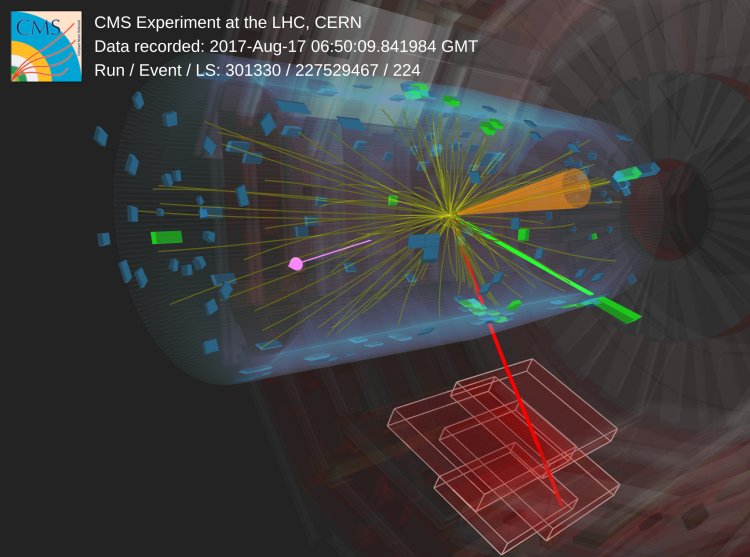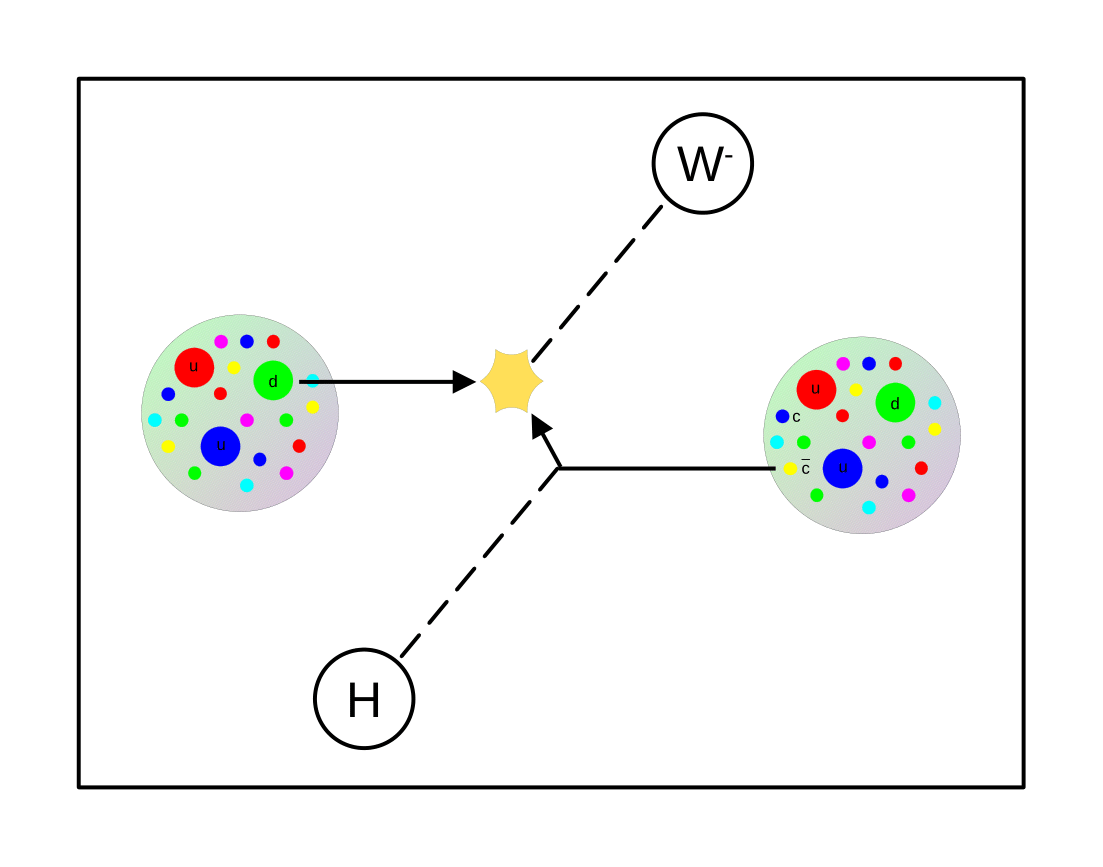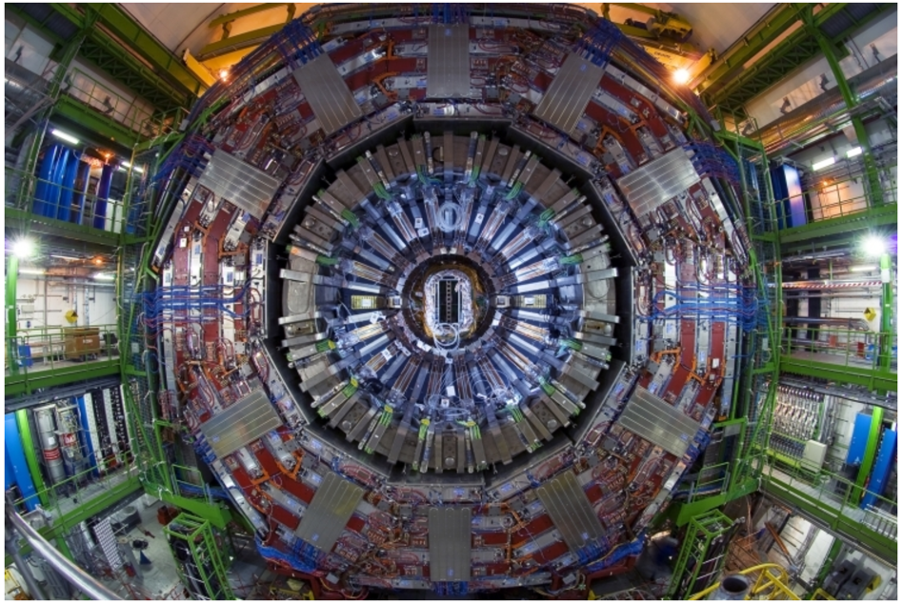
Measuring the charge asymmetry in W boson-associated production for the first time, paves the way for testing the coupling of the Higgs boson to charm and lighter quarks.
A new angle on Higgs physics
In a new analysis, the CMS experiment at CERN has taken a fresh look at how Higgs bosons are produced in association with W bosons (known as WH events). Using the full Run 2 dataset — 138 fb⁻¹ of proton–proton collisions at 13 TeV collected from 2016 to 2018 — researchers carried out the first measurement of a subtle imbalance: the charge asymmetry in WH production, defined as the preference for W⁺H production over W⁻H.
Since protons contain more “up” than “down” quarks (referred to as “valence” quarks), the standard model (SM) of particle physics predicts a preference for W⁺H over W⁻H by a factor of around two. A sketch of WH production is shown in Figure 1. Intriguingly, this effect also depends on how strongly the Higgs boson couples to charm and lighter quarks — an interaction that still remains to be observed experimentally.

Figure 1: Sketch of the production of a Higgs boson in association with a W boson after a proton-proton collision. While the valence up and down quarks play the main role in this process, the charm quark also has a minor contribution. If the Higgs boson couples more strongly to the charm quarks and other lighter quarks than we expect, the charge asymmetry in the WH production should change accordingly.
Hunting Higgs bosons through tau leptons
The analysis team focused on events where the Higgs boson decays to a pair of tau leptons, and the W boson decays to a charged lepton and a corresponding neutrino. These very clean, but equally rare events, leave behind three charged leptons in the detector — a distinctive signature that stands out among billions of collisions.
To separate true WH events from background processes like WZ or Drell–Yan production, the team used a neural network, trained to classify each event as signal or background. A dedicated method using data — rather than simulation — was developed to estimate the contribution from jets misidentified as leptons, further improving the precision of the result.
The analysis measured the production rates of W⁺H and W⁻H separately and extracted the charge asymmetry. No deviation from the SM expectation was observed within the experimental uncertainties. Nevertheless, the measurement places the first direct constraint on this asymmetry and shows the potential of this approach to explore the coupling of the Higgs boson to the charm, and even lighter quarks, in a novel way.
As CMS prepares to analyze data from Run 3 and beyond, this approach — combined with advanced machine learning and robust data-driven methods — offers a powerful new tool in the hunt for physics beyond the standard model.
Written by: Roger Wolf and Ralf Schmieder, for the CMS Collaboration
Edited by: Andrés G. Delannoy
Read more about these results:
-
CMS Physics Analysis Summary (HIG-24-019): "Measurement of the charge asymmetry in WH production in the H → ττ decay channel"
-
@CMSExperiment on social media: Bluesky - Facebook - Instagram - LinkedIn - TikTok - YouTube

